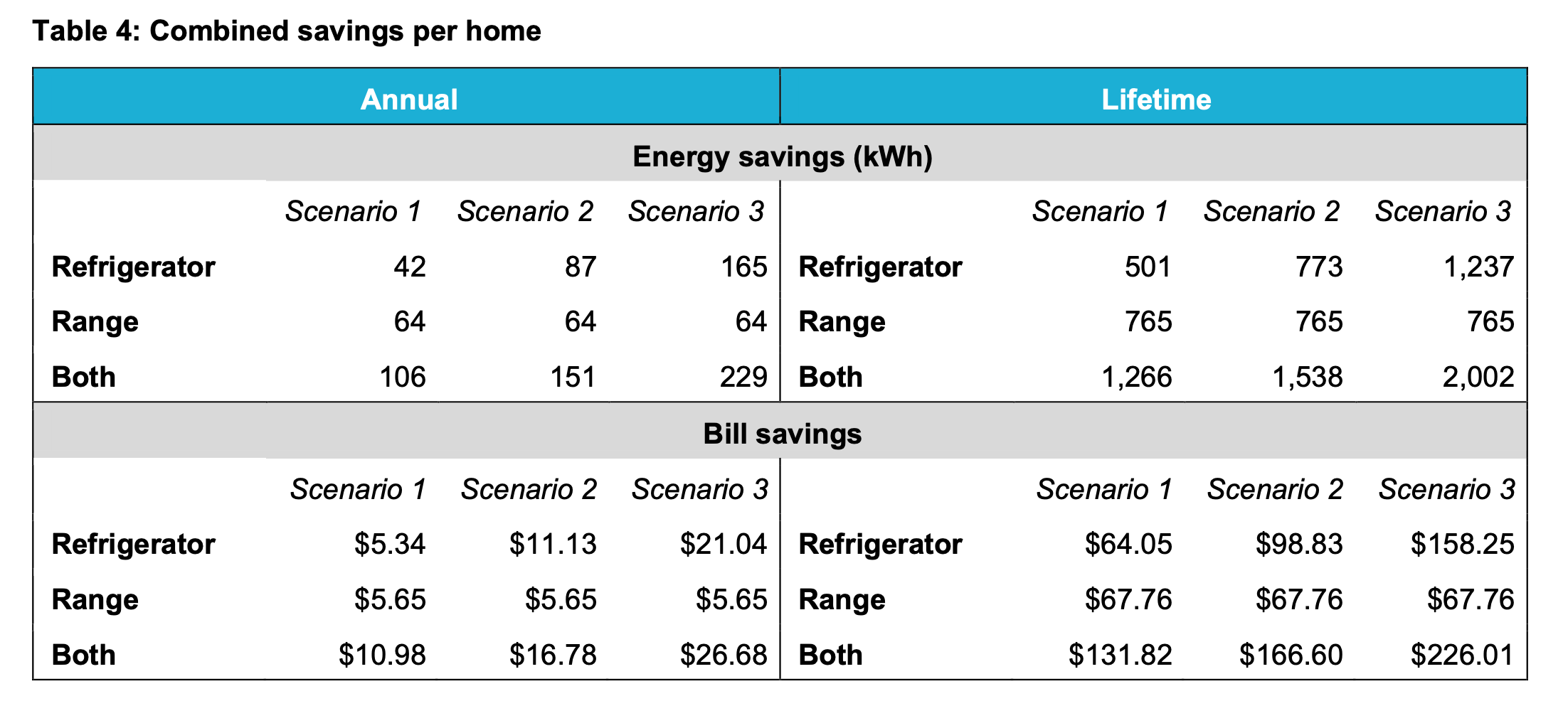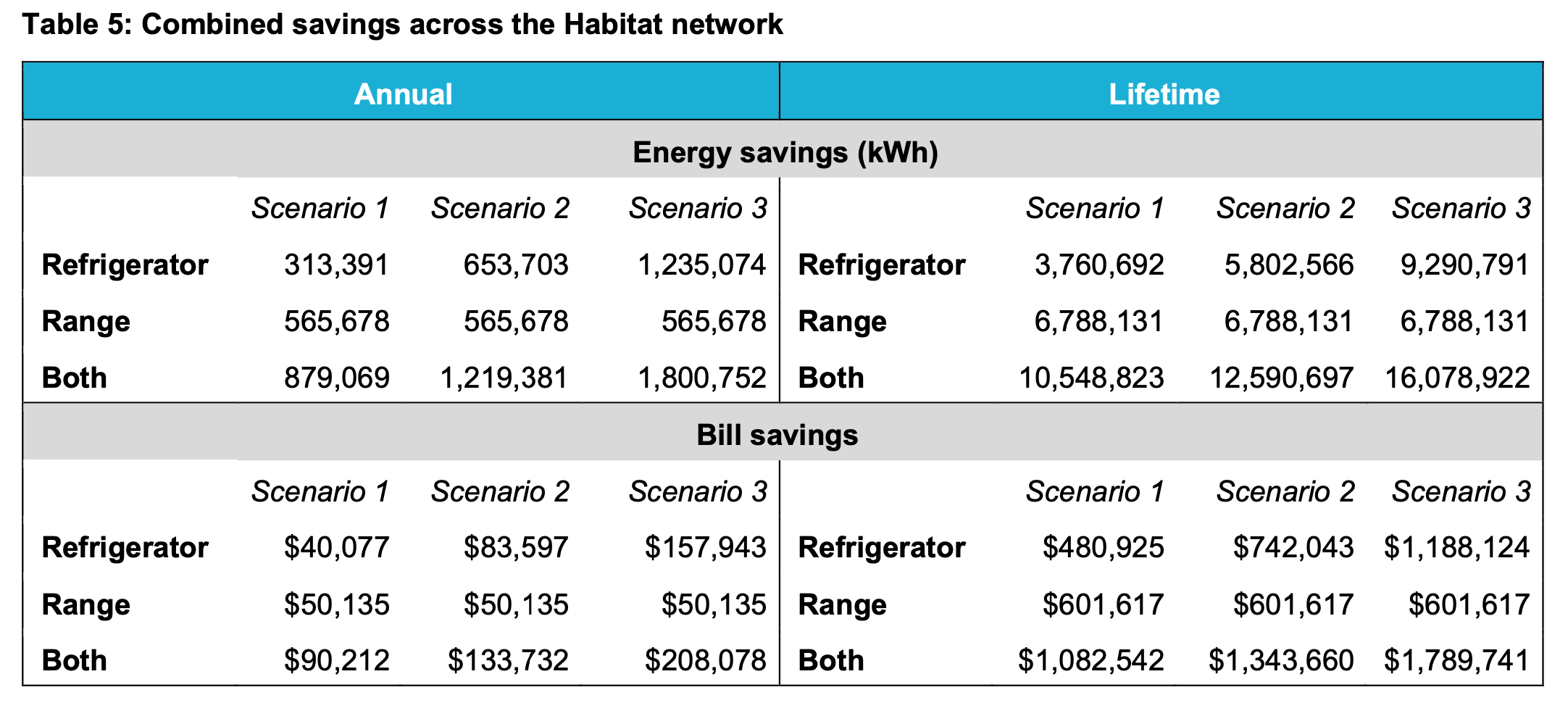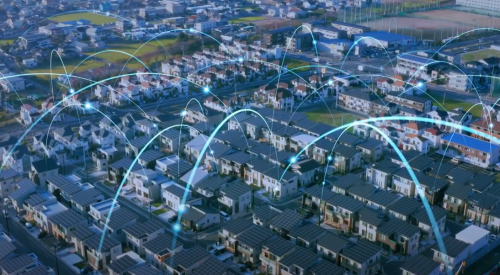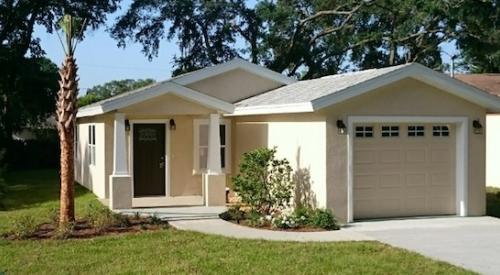Over the past two-plus decades, Whirlpool has donated more than 100,000 energy-efficient appliances to U.S. homes constructed by Habitat for Humanity, a global nonprofit that builds affordable, decent housing. But what savings do efficient refrigerators and ranges actually provide the lower-income residents of these homes?
That’s what Habitat set out to determine in a Whirlpool-funded study. The study looked at the energy use of over 7,500 fridges and almost 8,900 ranges that Whirlpool donated to Habitat between 2018 and 2020. It then compared that usage to estimated scenarios with less efficient appliances.
The results: Habitat found that every home with a donated, efficient fridge and range saw an electric bill savings of at least $27 per year and $226 over the lifetime of the appliances.
LOW-INCOME ANNUAL ENERGY SAVINGS WITH EFFICIENT APPLIANCES
“We work with low-income families, so $27 might not sound like a lot to an average reader, but that is meaningful to a family where they might be able to choose to invest those dollars in something they otherwise wouldn’t be able to,” says Julie Laird Davis, vice president, corporate and cause marketing partnerships, Habitat for Humanity. (Habitat serves families typically earning between 30% and 60% of the area median income.)

In fact, the Habitat study finds, the average low-income household pays $1,244 per year in utilities. By using energy-efficient appliances, a low-income household could see a reduction of more than 20% in its annual utility bill. “The cumulative effect is pretty impactful,” Laird Davis says.
It can be especially impactful for households that have to dedicate a sizable chunk of their income to energy. Nationally, the energy burden for low-income families is 8.6% of their monthly income—compared to 3% for higher-income families, according to the U.S. Department of Energy. Energy expense can get as high as 30% of low-income households’ monthly income. One in three U.S. households face a challenge in paying their energy needs, and about one in five reduce or forego necessities such as food and medicine to pay an energy bill, according to the U.S. Energy Information Administration.
“When we talk about housing affordability, it’s important to factor in not only mortgage costs but also the daily operating costs of the home as well as maintenance and repairs,” Laird Davis says. “Even a small reduction in annual utility bill expense can be significant for low-income families.”
Altogether, the donated appliances resulted in energy bill savings of $208,000 per year (about three quarters of that from the fridges).

There are also the environmental benefits of energy-efficient appliances. The donated fridges and ranges generated about 229 kilowatt hours in savings for each household per year—and 5.4 million kilowatt hours during the entire study period. Extrapolating these savings to the entire span of the Habitat-Whirlpool partnership corresponds to eliminating the greenhouse gas emissions of over 33,000 passenger vehicles in one year, the study finds.
“That means homeowners are reducing their carbon footprint,” Laird Davis says.
THE HABITAT-WHIRLPOOL PARTNERSHIP GOES PAST THE STUDY
The two organizations’ partnership stretches back 23 years. During that time, Whirlpool, as part of its corporate social responsibility efforts, has donated about $130 million to the nonprofit.
In 2021, Habitat and Whirlpool launched the BuildBetter initiative. Over three years, the program will deliver more than 250 energy-efficient and climate-resistant homes to Americans who need affordable housing. “This builds off of 10 years of research within our network,” Laird Davis says. “We’re seeing how we can have more sustainable building practices for areas of the country that might be hit by hurricanes, for example. What are the building practices to have stronger structures?”
RELATED: Habitat for Humanity 3D Printed Home Just Found its Newest Resident
In addition to enhanced storm-resilient measures, such as secure and sealed roof decks, BuildBetter homeowners can choose at least one upgrade that addresses a hazard specific to their state, such as a flood or fire defense. Habitat also will study the energy use of the BuildBetter homes to help identify more sustainable building methods.
“Part of what we’re trying to do with BuildBetter is make the point that energy efficiency and climate resiliency shouldn’t be a luxury. Everyone’s home should have those opportunities,” Laird Davis says.
Recently, Whirlpool has expanded its partnership with Habitat beyond the U.S. This year, Whirlpool will provide almost $6 million in funding and appliances to Habitat organizations not only in the U.S. but also in Argentina, Brazil, Canada, India, Mexico, Poland, Singapore, and the U.K.















